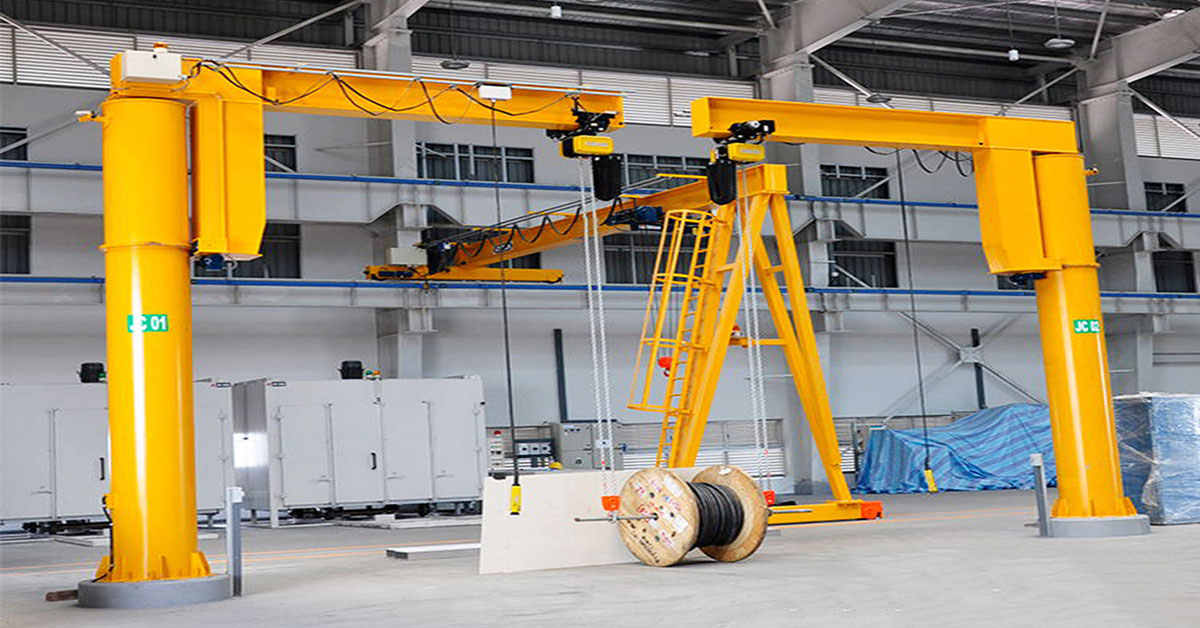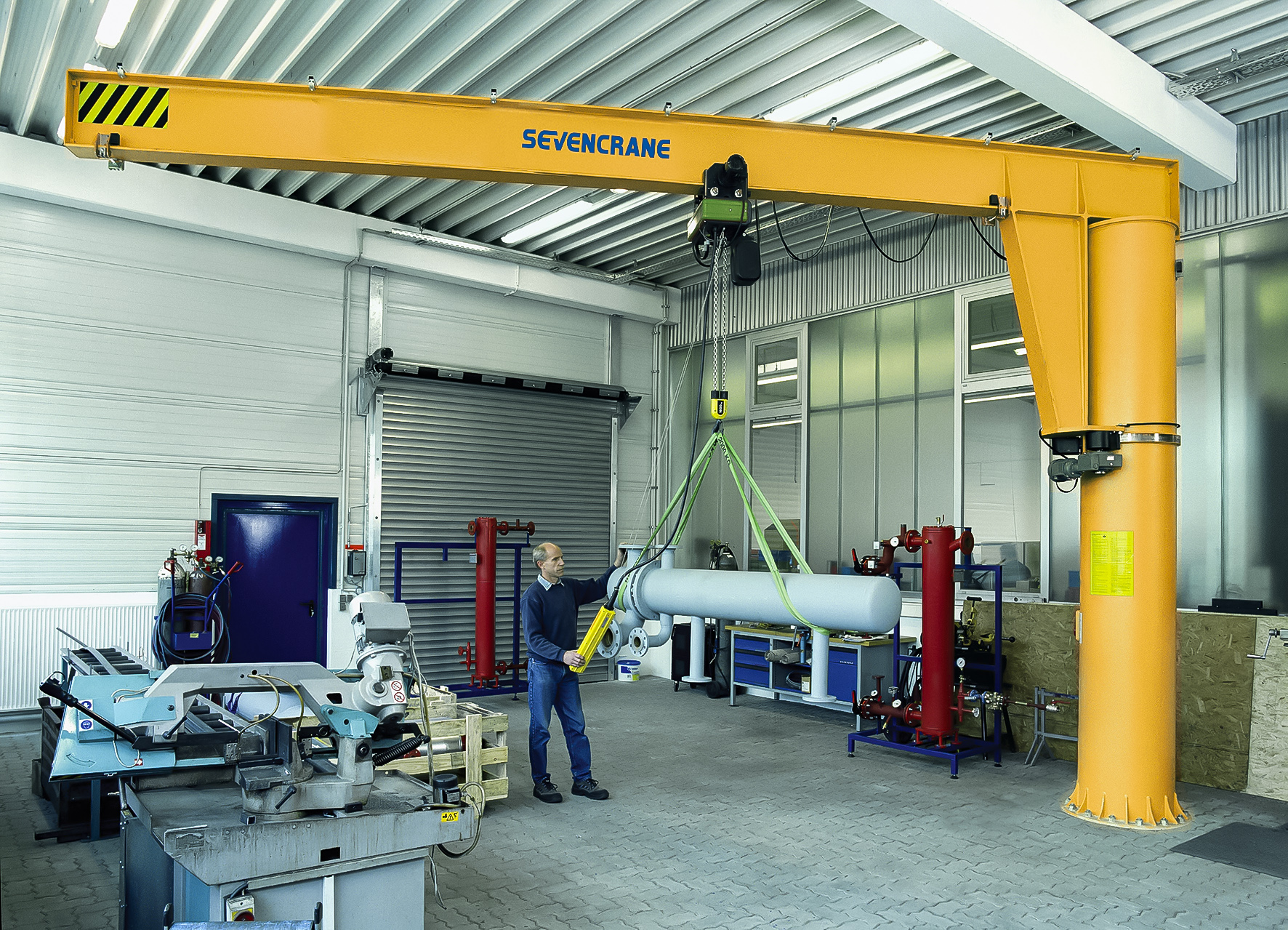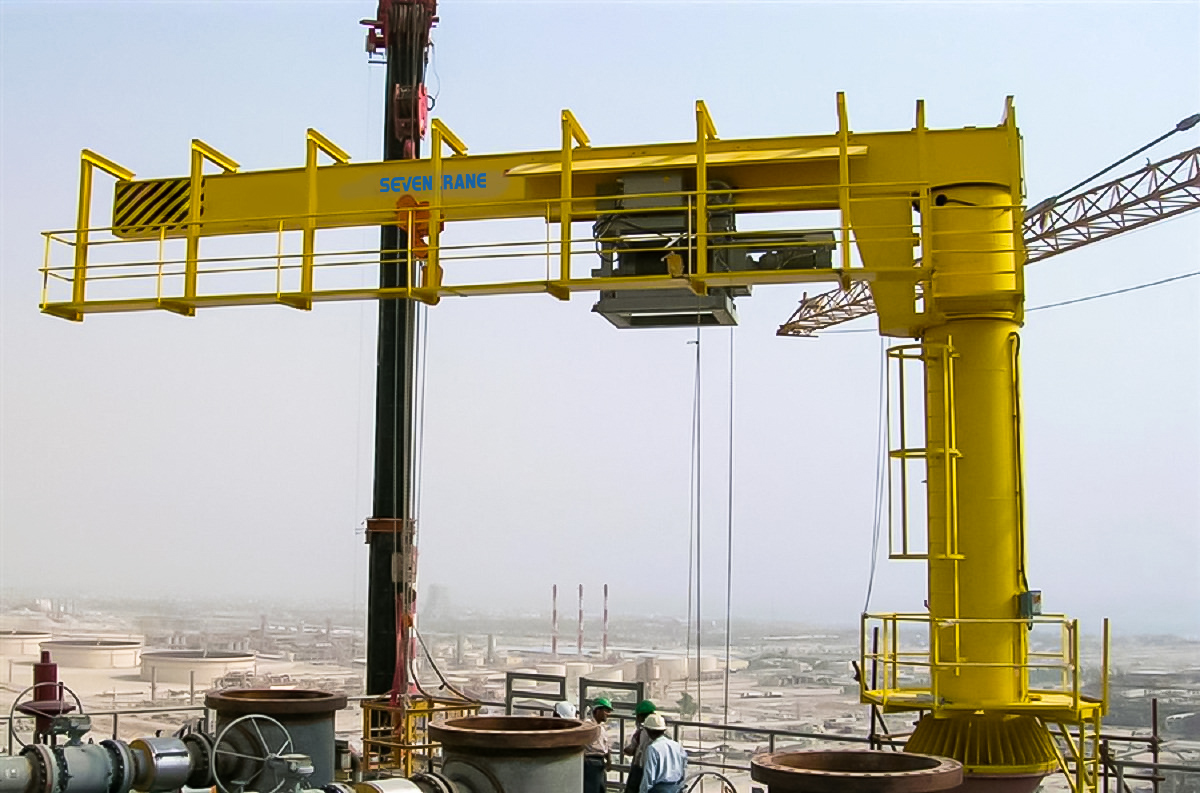Synonymous with power, efficiency and versatility, jib cranes have become an integral part of factory production lines and other light lifting applications. Their durability and reliability are hard to beat, making them a worthwhile investment for any business that needs an effective lifting solution.
At the heart of the SEVENCRANE product is the standard jib crane system with a safe working load of up to 5000 kg (5 tonnes). This capability can handle a wide range of lifting tasks, from transporting heavy equipment to manipulating delicate components. However, our services go beyond standard solutions. Understanding that every operation has unique needs, we offer custom systems to accommodate larger capacities, ensuring we meet your needs without compromise.

Our jib crane systems, also known as jib cranes, are guaranteed in quality and safety, as evidenced by a certificate of conformity provided with each piece of equipment. Even so, we strongly advocate the extra safety measures of testing after installation by a certified lifting equipment inspector. The safety and well-being of your team is paramount, and SEVENCRANE can provide this essential service to help safeguard your operations.
Our nationwide team of engineers is a group of skilled professionals with profound knowledge and practical experience in the field of lifting equipment. They do more than install crane systems. They will thoroughly test and certify your crane, giving you complete confidence in the operational safety and integrity of your equipment. This comprehensive service ensures your business can run at optimum productivity and efficiency, minimizing downtime and maximizing output.

This article is designed to help you understand the basics of our light jib crane systems.
Lift Height: This is the measurement from the floor to the underside of the boom arm (boom). This is measured in meters and a quote is always required.
Outreach: This is the length of the jib that the crane runs on. This is also measured in meters and is required for all quotes.
Rotation Angle: This is how far you want the system to rotate, such as 180 or 270 degrees.

Type of work crane: This is really the original question, if you will, the biggest one. You will need to decide whether your system will be mounted on a floor column or on a security wall. Does it need to be low headroom or regular headroom variation?
Hoist Type: Electric or manual chain hoists can be used with basic jib cranes, wire rope hoists are more suitable for larger models,
Hoist Hanging: Your hoist can be hung in a number of ways:
Push suspension: This is where the hoist is physically pushed or pulled along the arm
Geared Walking Suspension: By pulling the bracelet to turn the wheel of the trolley, the hoist moves along the arm
Electric Travel Suspension: The hoist travels electronically along the boom, controlled by a low voltage pendant controller or a wireless remote.







